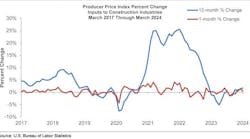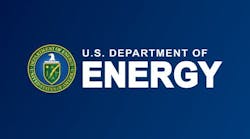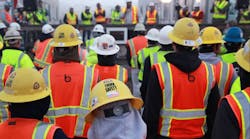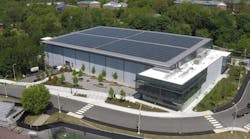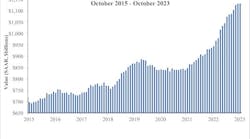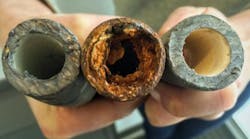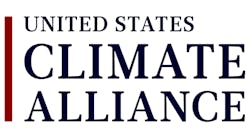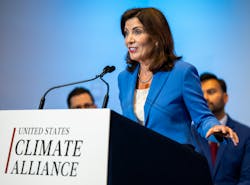PRESS RELEASE
NEW YORK, NY, September 21, 2023 – The U.S. Climate Alliance, a bipartisan coalition of 25 governors representing approximately 60% of the U.S. economy and 55% of the U.S. population, today announced a series of new commitments from its members to eliminate emissions from buildings, including collectively quadrupling heat pump installations by the end of the decade.
As part of the Alliance’s new heat pump target, members agreed to collectively reach 20 million heat pump installations across the coalition by 2030, with the aim of ensuring at least 40% of benefits flow to disadvantaged communities.
New commitments would quadruple U.S. heat pump installations by 2030.
These installations will advance progress toward Alliance members’ goal of decarbonizing buildings, including collectively achieving zero-emission new construction as soon as practicable and accelerating efforts to eliminate emissions from existing buildings at a pace consistent with emissions targets under the Paris Agreement.
Today’s commitments were announced at a Climate Week NYC event featuring Alliance co-chair and founding member Washington Gov. Jay Inslee, Alliance co-chair Maine Gov. Janet Mills, Alliance co-chair elect New York Gov. Kathy Hochul, and White House National Climate Advisor Ali Zaidi.
“We are in a climate emergency and the window to act is closing. U.S. Climate Alliance states get that. That’s why we’re taking bold, immediate action by quadrupling heat pump installations by 2030,” said Gov. Inslee. “Heat pumps are available and affordable, not to mention better for the air we breathe. So, our commitment today is good for our planet, and for our people.”
“Transitioning to heat pumps in Maine is creating good-paying jobs, curbing our carbon emissions, cutting costs for families, and making people more comfortable in their homes,” said Gov. Mills, who recently announced a new heat pump deployment goal for Maine. “When I took office in 2019, I set a goal of installing 100,000 heat pumps in Maine by 2025. After reaching that goal two years ahead of schedule, we are now on our way to achieving our new target of 275,000 heat pump installations by the time I leave office in 2027. Maine is meeting our climate action goals, and we’re proud to lead the way as part of the U.S. Climate Alliance to encourage other states to do the same.”
“We can’t fight climate change alone. It’s critically important that we continue the transition to create an affordable clean energy future that benefits all New Yorkers,” said Gov. Hochul. “I am proud to stand side by side with my fellow Governors in the U.S. Climate Alliance to show our commitment to bold action to decarbonize the buildings sector. This coalition continues to prove that when we come together, we can make a greener future more equitable and accessible for all.”
“Combined with President Biden’s historic climate leadership, these bold commitments by governors to cut emissions from buildings will have a catalytic impact across America. It will clean up the air our children breathe, save hardworking families money on their monthly energy bills, strengthen America’s climate resilience, and create good-paying jobs in every corner of the country,” said White House Climate Advisor Zaidi. “Thanks to the Biden climate and economic agenda, we have for the first time the resources we need to transition America to a clean energy future and seize the opportunities that come with it. It’s good news for our economy and good news for our climate and energy security.”
As the Alliance pursues building decarbonization efforts, members today also agreed to:
- Support proactive planning for an equitable and predictable transition to a zero-emission buildings future;
- Advance actions that ensure new buildings lead the way to achieve long-term decarbonization goals, including supporting the development of zero-emission building codes and standards;
- Accelerate efficient, electric retrofits that promote healthy homes and businesses, particularly for low-income families that bear disproportionate cost and energy burdens;
- Pursue innovative solutions that help mitigate volatile energy prices, enhance grid reliability, and promote climate resilience;
- Prioritize equity with the aim of ensuring at least 40 percent of benefits from building decarbonization flow to disadvantaged communities;
- Build the workforce needed to support the clean energy transition and drive the creation of good-paying, career-pathway jobs;
- Maximize climate benefits of new federal funds and programs under the Inflation Reduction Act (IRA) and the Infrastructure Investment and Jobs Act (IIJA), including by identifying opportunities to streamline incentives and educate consumers;
- Lead by example through efforts to reduce emissions from state facilities.
Direct and indirect emissions from buildings account for more than 30 percent of all U.S. greenhouse gas emissions. Decarbonizing buildings through accelerated energy efficiency and electrification is an imperative not only to reduce emissions and achieve U.S. climate targets, but also to meaningfully improve indoor air quality and public health for families and communities. Heat pumps can play a critical role, providing energy-efficient heating and cooling that reduce emissions from homes and businesses.
To further advance and accelerate building decarbonization efforts, several groups of Alliance members made additional commitments today, including:
- Ten members will explore the adoption of zero-emission standards for space and water heating equipment (CA, CT, HI, MA, MD, NY, OR, PA, RI, WA);
- Eight members will explore the adoption of Building Performance Standards like those enacted in CO, MD, OR, and WA (CA, CT, HI, MA, ME, NY, PA, RI);
- Eight members will explore the development of clean heat standards (CT, HI, MA, MD, NJ, NY, PA, RI);
- Five members will work to phase out fossil fuel heating and cooling in new construction by 2027 (CA, MA, MD, NY, WA);
- Twelve members will support the development and adoption of advanced energy-efficient building codes that maximize opportunities for efficient electrification and support solar and electric vehicle readiness (CA, CO, CT, MA, MD, ME, NM, NY, OR, PA, RI, WA);
- Ten members will take actions to align buildings sector utility resource planning and procurement policies with state climate goals (CA, CT, HI, MA, MD, NJ, NY, OR, RI, WA);
- Two members will become partners in the U.S. Department of Energy’s Better Climate Challenge, joining MD and other partners in committing to reduce scope 1 and 2 emissions from state facilities by at least 50 percent in the next 10 years (HI, ME).
This work, which will be customized by members to meet their individual needs and timelines, builds on and complements the Alliance’s convening with the White House in May and the Federal-State Buy Clean Partnership launched in March to bolster state and federal efforts to decarbonize buildings, as well as the coalition’s collective commitment at COP26 to advance policy pathways and programs to eliminate emissions from buildings. Additionally, this announcement complements President Biden’s historic commitment to cut greenhouse gas emissions by at least 50-52% by 2030 and achieve overall net-zero emissions by 2050.
For more information on the high-impact actions members are taking to decarbonize buildings, please visit the Alliance’s Buildings Policy Priority page on its new website and first-of-its-kind Climate Policy Database launched earlier this year.
About the Alliance
Launched on June 1, 2017, by the governors of Washington, New York, and California to help fill the void left by the previous administration’s decision to withdraw the U.S. from the Paris Agreement, the Alliance has grown to include governors from across the U.S. Governors in the Alliance have pledged to collectively reduce greenhouse gas emissions by at least 26-28% below 2005 levels by 2025, at least 50-52% below 2005 levels by 2030, and collectively achieve overall net-zero greenhouse gas emissions as soon as practicable, and no later than 2050.
Alliance states and territories are achieving lower levels of air pollution, delivering more energy savings to homes and businesses, preparing more effectively for climate impacts, generating more electricity from zero-carbon sources, and collectively employing over 40% more workers in the clean energy sector than the rest of the country.
For more on Alliance members’ bipartisan, cross-sector climate action, see our Fact Sheet.
###
